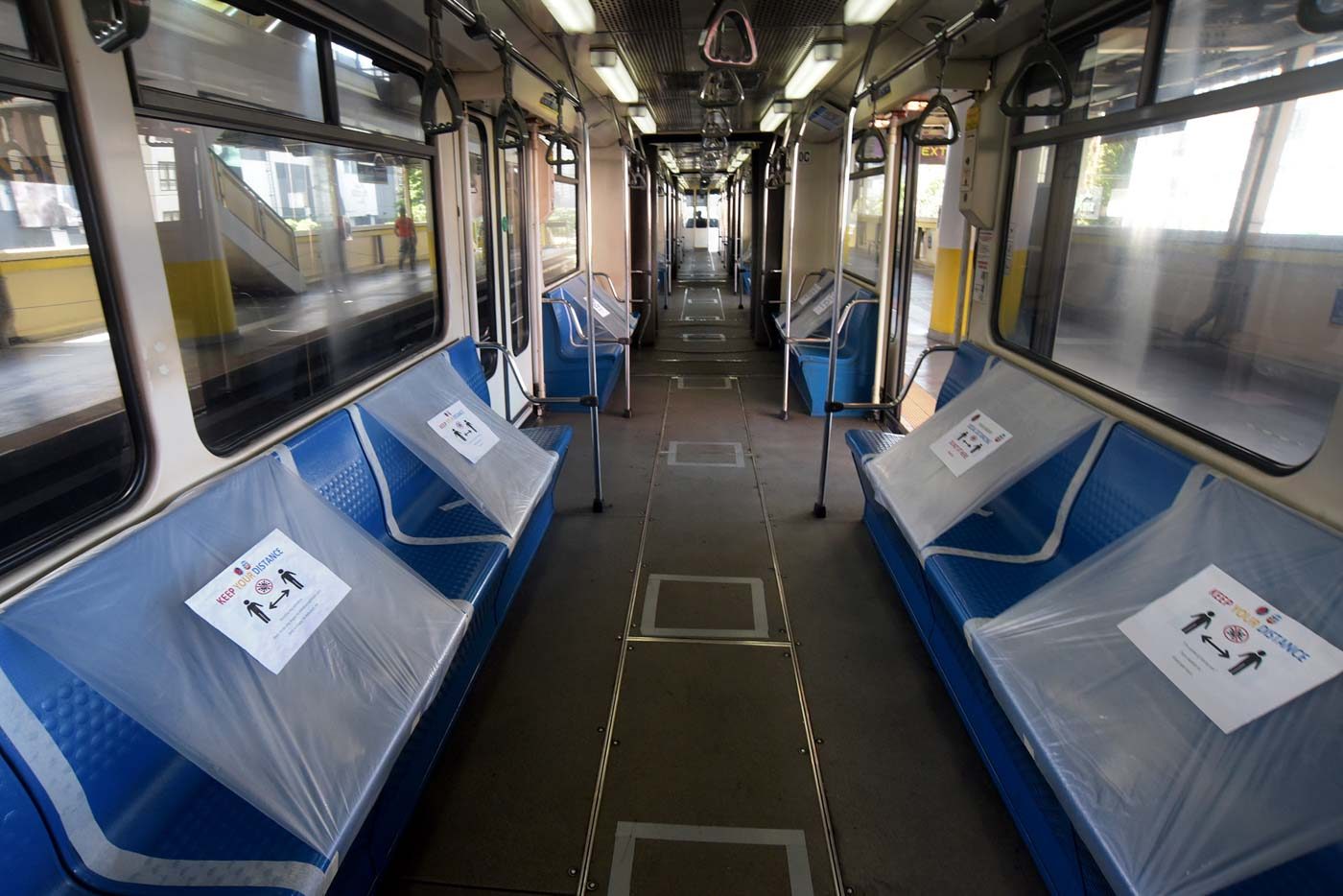SUMMARY
This is AI generated summarization, which may have errors. For context, always refer to the full article.

MANILA, Philippines – There will be more Metro Rail Transit Line 3 (MRT3) train sets running on the first day of Metro Manila’s shift to general community quarantine (GCQ) on Monday, June 1.
From 15 train sets before the enhanced community quarantine (ECQ) began in Metro Manila last March 15, the Department of Transportation (DOTr) said there will be 19 train sets beginning Monday.
But with physical distancing to be enforced to prevent the spread of the coronavirus, there can only be 153 passengers per train set, according to MRT3 Director for Operations Michael Capati.
This is only 13% of the 1,182 capacity per train set pre-ECQ. (READ: Will public transportation be enough once Metro Manila is placed under GCQ?)
The addition of trains would help ease the load, said Transportation Secretary Arthur Tugade in a statement on Sunday, May 31.
“Sa ganitong pamamaraan, madadagdagan ang biyahe at madadagdagan ang mga mananakay bagamat limited capacity,” Tugade said.
(Through this, we’ll be able to increase trips and accommodate more passengers despite the limited capacity.)
Markers were placed in the trains to remind commuters of the one-meter physical distancing requirement.
The MRT3, pre-pandemic, was notoriously congested, with long lines snaking around train stations and passengers crammed inside trains during rush hour. (READ: On their own: Commuters and the looming transportation crisis in Metro Manila)
Increasing speed
The DOTr also said that starting Monday, trains will run at up to 40 kilometers per hour (km/h) between North Avenue and Santolan stations, and between Buendia and Taft stations. The pre-ECQ speed was 30 km/h for the entire railway line.
“This will reduce headway, or the time between trains, from an average of 9 minutes pre-ECQ to an average of 6 minutes upon resumption of operations,” added the transportation department.
The DOTr said it was able to add more trains and increase operating speed through ongoing rail replacement activities and the agreement to deploy 3 more Dalian train sets.
The DOTr earlier said that if rail replacement activities are completed in September, the 30 km/h speed of the MRT3 could be gradually increased to 60 km/h by December.
As of Thursday, May 28, 40,140 linear meters out of 65,892 linear meters of rail have been replaced, or 60.92%. – Rappler.com
Add a comment
How does this make you feel?
![[In This Economy] A counter-rejoinder in the economic charter change debate](https://www.rappler.com/tachyon/2024/04/TL-counter-rejoinder-apr-20-2024.jpg?resize=257%2C257&crop=267px%2C0px%2C720px%2C720px)
![[Vantage Point] Joey Salceda says 8% GDP growth attainable](https://www.rappler.com/tachyon/2024/04/tl-salceda-gdp-growth-04192024.jpg?resize=257%2C257&crop_strategy=attention)
![[ANALYSIS] A new advocacy in race to financial literacy](https://www.rappler.com/tachyon/2024/04/advocacy-race-financial-literacy-April-19-2024.jpg?resize=257%2C257&crop_strategy=attention)


There are no comments yet. Add your comment to start the conversation.